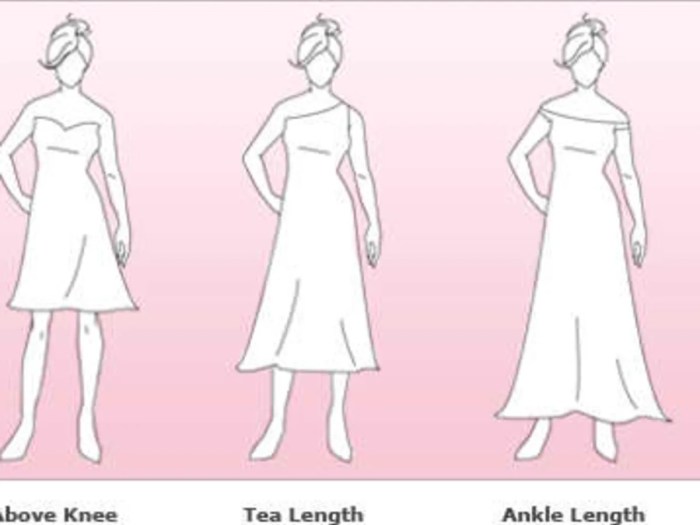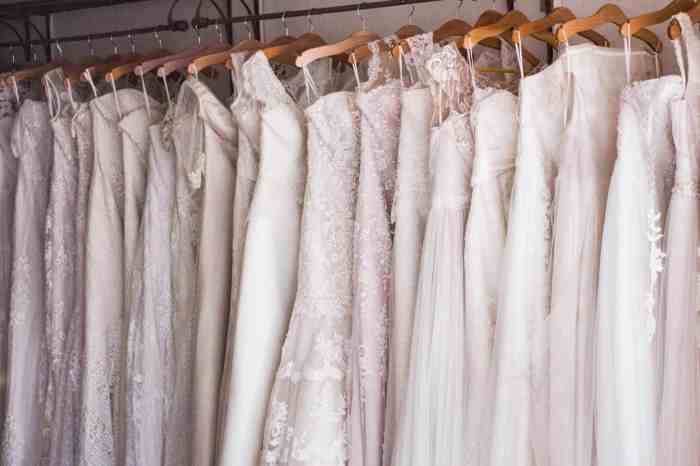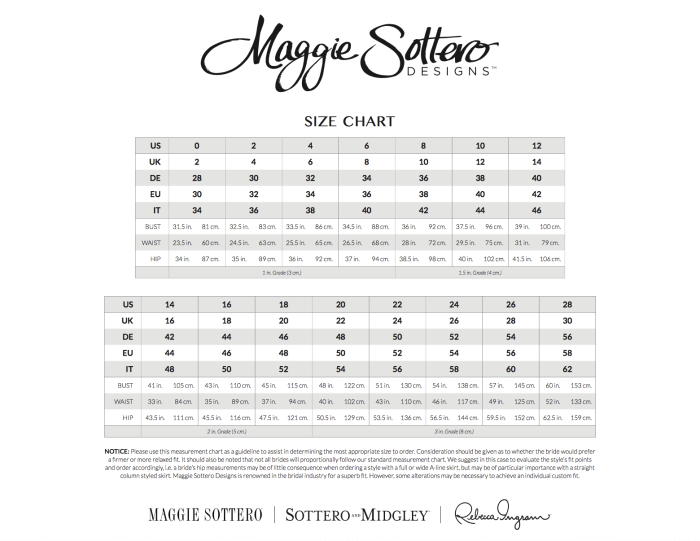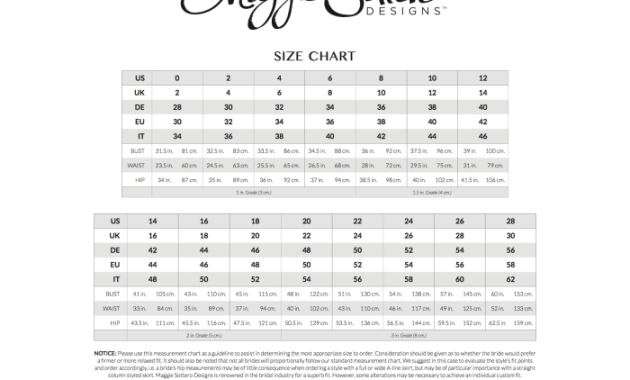Defining Sample Size in Wedding Dress Shopping
What is the sample size for wedding dresses – Understanding “sample size” in the context of wedding dress shopping isn’t as straightforward as it might seem. It’s not simply about the number of dresses tried on; it encompasses a broader range of factors influencing a bride’s search.
Interpretations of Sample Size
The term “sample size” can be interpreted in several ways when discussing wedding dress shopping. The number of dresses tried on, stores visited, styles considered, and the duration of the search all contribute to the overall scope of the bride’s search. Consider these different facets to gain a complete picture.
| Interpretation | Description | Example 1 | Example 2 |
|---|---|---|---|
| Number of Dresses Tried On | The literal count of dresses physically tried on by the bride. | Sarah tried on 10 dresses at her first appointment. | Emily only tried on 3 dresses before finding “the one”. |
| Number of Stores Visited | The number of bridal shops the bride visited during her search. | Jessica visited 5 bridal boutiques across the city. | Maria found her dress at the very first store she visited. |
| Number of Styles Considered | The range of dress styles (e.g., ballgown, A-line, mermaid) the bride explored. | Ashley considered ballgowns, A-lines, and sheath dresses. | Chloe focused solely on bohemian-style dresses. |
| Timeframe of the Search | The duration of the bride’s dress shopping journey. | Olivia spent six months searching for her perfect dress. | Ava found her dress within a month. |
Factors Influencing Sample Size
Several key factors significantly influence the sample size of a bride’s wedding dress search. Budget, personal style, time constraints, and the clarity of her vision all play crucial roles.
Budget’s Influence on Sample Size
Budget significantly impacts the number of dresses a bride can realistically try on. A higher budget allows for more appointments and trying on a wider range of dresses, potentially increasing the sample size. Conversely, a tighter budget might necessitate a more focused approach, reducing the sample size.
Personal Style and Preferences

Source: cloudinary.com
A bride’s personal style and preferences heavily influence the types of dresses she considers. Brides with a clear vision might focus on a specific style, resulting in a smaller sample size. Those with less defined preferences might explore a broader range of styles, leading to a larger sample size.
Determining the ideal sample size for wedding dresses depends on factors like the designer’s target market and desired level of accuracy. However, understanding appropriate attire is crucial, especially for guests; referencing a guide on wedding guest etiquette dress code can help avoid fashion faux pas. Returning to sample sizes, a larger sample generally provides more reliable data for predicting consumer preferences in wedding dress designs.
Time Constraints
Time limitations directly affect the sample size. Brides with ample time can explore more options, increasing their sample size. Those with tight deadlines might have to prioritize and limit their search, resulting in a smaller sample size.
Clear Vision vs. Undefined Preferences
Brides with a clear vision of their dream dress tend to have a smaller sample size, as they know what they’re looking for. Brides with less defined preferences often explore a wider variety of styles, leading to a larger sample size.
The Shopping Process and Sample Size
The wedding dress shopping experience is typically a multi-stage process where the sample size naturally decreases as the bride refines her preferences.
Stages of Dress Shopping and Sample Size Reduction
A typical wedding dress shopping journey involves initial browsing, appointments at bridal shops, trying on dresses, and ultimately selecting a dress. At each stage, the number of dresses under consideration typically reduces.
Flowchart of Decision-Making
The decision-making process can be visualized as a flowchart. It begins with a large pool of potential dresses. As the bride tries on dresses and gains clarity, she eliminates options that don’t meet her criteria, resulting in a smaller selection until a final choice is made.
- Initial Research (Large sample size)
- Appointments at Bridal Shops (Sample size decreases)
- Trying on Dresses (Sample size further decreases)
- Narrowing Down Choices (Sample size significantly reduced)
- Final Selection (Sample size: 1)
Reasons for Sample Size Reduction
- Budget constraints
- Discovering a preferred style
- Receiving feedback from others
- Time limitations
- Finding “the one” early in the process
Visual Representation of Sample Size: What Is The Sample Size For Wedding Dresses

Source: loudbride.com
An infographic could visually represent the factors influencing sample size using a circular chart. The central circle could represent the final dress selection, with radiating segments representing factors like budget, time, style preferences, and number of stores visited. The size of each segment could reflect its relative influence on the overall sample size. The color scheme could use soft pastels to maintain an elegant feel, with a bolder color for the final selection.
Data could be represented using percentages or numerical values.
Images depicting different stages of wedding dress shopping could visually showcase the shrinking sample size. For instance, an initial image might show a bride surrounded by numerous dresses on racks, representing a large sample size. A subsequent image could show her trying on a smaller selection of dresses, reflecting a reduced sample size. A final image would depict her in her chosen dress, highlighting the single final selection.
Alternatives to Traditional Sample Size
Beyond simply counting dresses tried on, a more holistic understanding of a bride’s search can be achieved by considering other factors.
Alternative Approaches, What is the sample size for wedding dresses
Online research, consultations with stylists, and discussions with friends and family all contribute to the selection process, providing a more nuanced understanding of the “sample size”.
Comparison of Approaches

Source: co.uk
| Approach | Description | Advantages | Disadvantages |
|---|---|---|---|
| Traditional (Dresses Tried On) | Counting the number of dresses physically tried on. | Simple and quantifiable. | Overlooks other influential factors. |
| Holistic Approach | Considering online research, consultations, and other influences. | Provides a more comprehensive understanding. | More subjective and difficult to quantify. |
Popular Questions
What if I change my mind after trying on several dresses?
It’s perfectly normal to change your mind! Wedding dress shopping is a process of discovery. Keep an open mind and don’t feel pressured to make a decision until you’re absolutely certain.
How can I avoid feeling overwhelmed during the process?
Set a realistic budget and timeframe. Prioritize appointments, create a Pinterest board for inspiration, and bring a supportive group of trusted friends or family members for advice.
Should I bring a lot of people with me to appointments?
Limit your entourage to a few trusted individuals whose opinions you value. Too many opinions can be overwhelming and confusing.
What if I can’t find “the one”?
Remember that finding the perfect dress is a journey, not a race. If you haven’t found “the one” after a reasonable search, consider adjusting your expectations or extending your timeframe.

